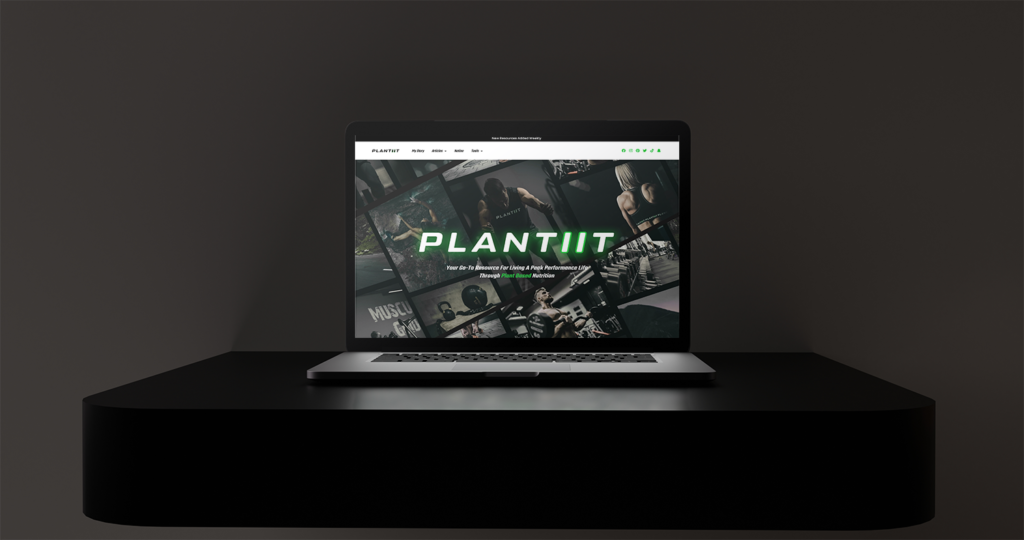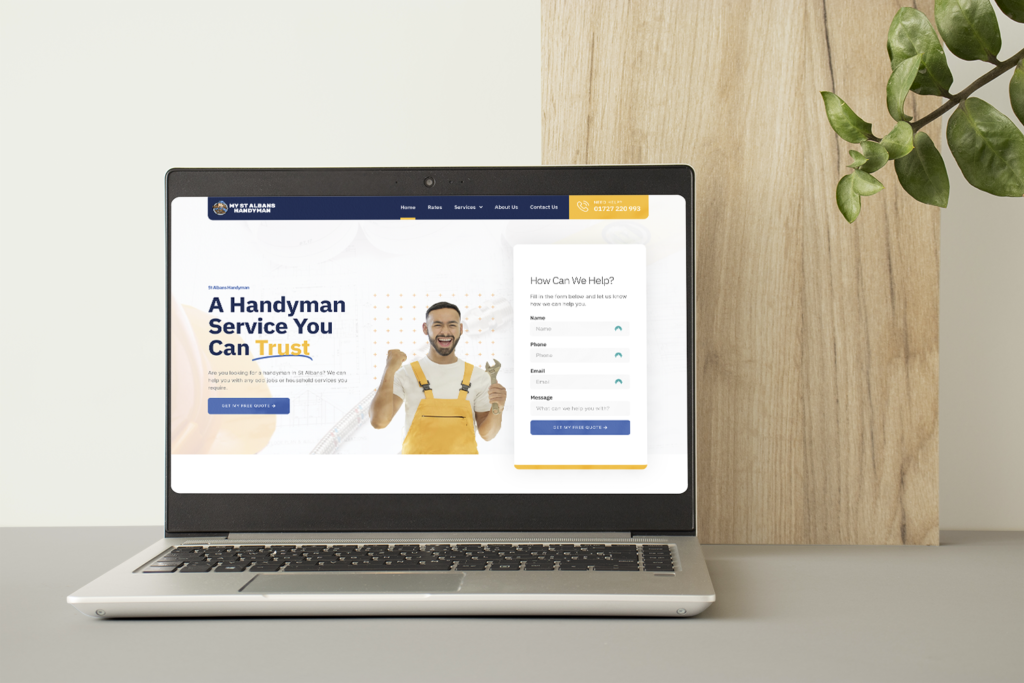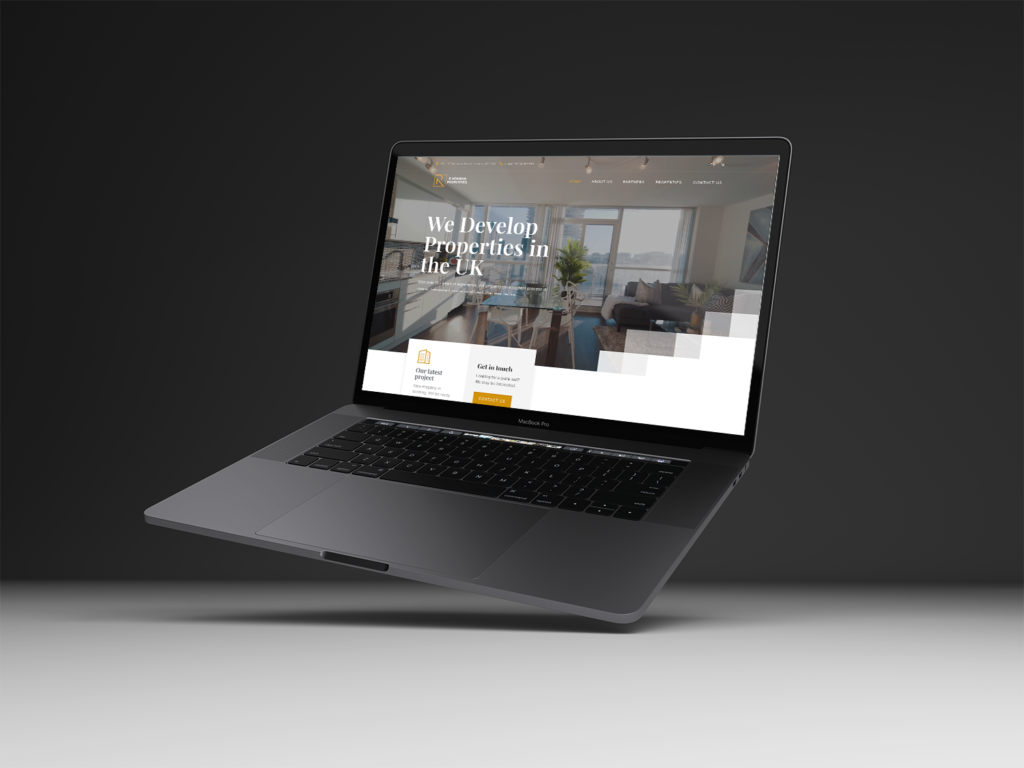Wondering how much it really costs to build an effective website in St Albans? With confusing quotes and few local insights, budgeting is challenging. This guide provides UK SMBs with definitive local market knowledge to make smart website investment decisions.
Discover real costs based on key factors like design, features and maintenance. Get tailored guidance to strategise your budget and resource the ideal website aligned with your business goals and audience needs. Access personalised insights to maximise returns from your online presence.
Table of Contents
Local Market Analysis
The dynamics of supply, demand, and pricing for website design services in St Albans have their own unique characteristics compared to the broader UK market. Carefully analysing these local factors provides critical insights for businesses looking to build an effective online presence tailored to their target audience.
Demand and Supply Dynamics
Website design demand in St Albans is driven by two primary segments – brick-and-mortar small businesses wanting an online presence and startups needing websites to launch their ventures.
The former includes retail stores, restaurants, salons, tradespeople, professional service providers, and other traditional businesses wanting to boost visibility and compete with national chains. Their key goals are to provide information like contact details, showcase products/services, and enable online bookings or purchases.
Startups span a diverse range of industries, from tech and consulting firms to creative agencies and product companies. Websites lend credibility, offer benefits and allow them to reach customers online, which are crucial for securing initial funding.
Additionally, the COVID-19 pandemic has been a catalyst for increased demand, as commerce rapidly shifted online. Many businesses that earlier didn’t prioritise websites now view them as a necessity.
On the supply side, St Albans has over 30 website design providers catering to this demand. Most are independent freelancers or micro-agencies under 5 people. Their services are targeted at affordable packages for local small businesses and startups.
The fragmented supplier landscape results in high competition. Providers aim to differentiate themselves based on specialisations, quality, customer service and value. But aggressive price competition is also common.
Prevalent Pricing Trends
Website design and development prices in St Albans tend to range 20-30% below national averages. This can be attributed to lower overheads for local suppliers and a focus on budget-conscious small businesses.
Simple 4-8 page brochure websites for local businesses cost between £500-£800 on average if built using common templates like WordPress. Custom WordPress sites with more advanced functionality like integrated e-commerce, booking systems etc. average £2,000-£4,000 based on complexity. High-end web applications with extensive custom programming and complex features can cost over £10,000.
Factors that increase project pricing include the need for advanced custom features and functionality, high traffic volumes needing robust hosting infrastructure, and specialised design needs. Opting for template-based sites with standard features is generally more affordable for small businesses.
Prices also vary based on additional services needed beyond just website building. Many clients want content writing, search engine optimisation, hosting, maintenance, and support bundled together. The more services included, the higher the overall project cost.
Competitive Landscape
The St Albans website design market is characterised by high competition between over 30 small providers. This fragmentation leads to intense price and service competition to win clients.
Most competitors are independent freelancers or micro-agencies under 5 people, catering to local small businesses. Larger firms like Studio Line and Codalia Creative handle bigger clients but also compete for smaller projects.
To differentiate, many designers focus on specific specialisations – e.g. building advanced WordPress sites, crafting high-converting e-commerce stores, optimising UX and speed, offering PPC advertising services etc. Developing a niche can attract clients with specific needs.
Customer service and support is another key area of focus. Given the fragmented market, retention and referrals are crucial for continued growth. Providers aim to build long-term relationships with clients to get recurring business for updates, maintenance and new projects.
The competitive dynamics mean clients can often negotiate 10-20% discounts on initial quotes. But suppliers also need to balance affordability with profits to remain sustainable. Managing this balance along with differentiation and great service is key to thriving as a website design provider in St Albans.
Factors Affecting Website Design Costs
Several key factors influence the investment required to create and operate a custom website that effectively meets business goals. Understanding how these factors impact costs is essential for making informed budgeting decisions.
Customisation Costs
The need for customisation and unique design is a primary cost driver for website projects. Relying solely on out-of-the-box templates with minimal adjustments delivers the most cost-efficient option. But for many businesses, having a bespoke site that reflects their brand identity is worth the premium.
Original designs, customised layouts, and branded graphics that align with specific branding guidelines require greater effort from the design team. Animations, videos, and special interactive elements add further to the scope.
The provider may need to purchase custom photography or create illustrations from scratch to achieve the desired visual impact. Sourcing these original assets and incorporating them into site designs inflates costs compared to using stock imagery.
Extensive custom functionality tailored to the client’s needs also increases development time and subsequently, pricing. Integrating the website with internal business systems like CRMs or ERPs requires dedicated programming. Building custom payment gateways, booking systems, live chat features, or complex calculators is more labor-intensive than using standard plug-ins.
While pre-made templates provide significant savings, they offer limited ability to tailor experiences for niche audiences. Businesses seeking a distinct brand identity and tailored functionality generally require bigger budgets to achieve the appropriate customisation. But for many, the benefits justify the premium investment.
Complexity and Page Count
Website complexity in terms of information architecture, features, design sophistication and content volume also sway project costs.
More complex site architectures with advanced interfaces, dynamic pages, complex animations, high interactivity and unconventional navigation add more effort to both design and development. Simple brochure sites with standard templates are quicker to build.
The number of pages and diversity of content types also matter. An online store with hundreds of product pages costs more than a 10-page informational website. If various content types like videos, calculators, galleries, questionnaires etc. are required, greater design considerations are necessary to maintain usability.
Building and integrating content management systems to manage multi-writer publishing also adds costs. The development effort increases with every layer of complexity.
Extensive copywriting requires more investment, along with search engine optimisation of large volumes of content. Even post-launch content creation and editing for updating pages means ongoing costs.
In essence, the more multifaceted the information architecture, functionality and content, the higher the overall investment needed to deliver a cohesive final product.
Server Resources and Hosting
The backend technical infrastructure for hosting and running websites represents significant ongoing costs. These depend on site traffic volumes, bandwidth needs, security requirements and performance expectations.
Websites expecting high monthly visitors and bandwidth usage need robust hosting plans with adequate servers, storage and data capacity to maintain uptime. Insufficient technical resources lead to slow load times and service outages – crippling for customer experience.
E-commerce stores need resources to support secure transactions, customer databases, inventory management and order tracking at scale. Media sites require ample data bandwidth and storage for video content distribution.
Choosing the right server capacity reduces risks of inadequate resources but results in higher hosting costs. Overprovisioning also raises expenses unnecessarily. Cloud hosting provides the flexibility to adjust plans and technical resources based on changing business needs.
Factoring current and future technical requirements into hosting costs is vital for smooth functioning. Though expensive, adequate investments here provide tangible benefits for both owners and visitors.
Website Building Options and Their Costs
When starting their online journey, businesses have several options to create a website aligned with their goals, capabilities and budget. Evaluating the costs and benefits of do-it-yourself building, using WordPress or hiring web professionals helps make an informed decision.
DIY Website Building
DIY website builders like Wix, Weebly and Squarespace allow anyone to create sites through drag-and-drop templates and intuitive editors. These require no coding expertise. Pre-designed templates, stock media and basic animations provide starting points for customisation.
Pricing often starts from £3-£15 per month based on features needed. Easy hosting setup is included, along with responsive designs viewable across devices. E-commerce capabilities, email marketing integrations, online booking etc. cost extra.
The DIY approach allows basic websites with 5-15 pages to be built with minimal monetary investment. But substantial effort is still required for layout adjustments, content population, graphics creation/editing and navigation design. Lack of professional help often results in an amateurish site.
DIY tools also offer limited design flexibility compared to advanced platforms like WordPress. Extensive customisation is either impossible or requires complex workarounds. Technical aspects like site speed and security also need manual effort.
WordPress Websites
WordPress bridges DIY simplicity with extensive customisation capabilities through its themes and plugins ecosystem. Thousands of designs and extensions exist, both free and paid. Hosted solutions like WordPress.com provide managed setup starting from £3 per month.
Self-hosted open-source WordPress requires purchasing web hosting, costing £5-£100 monthly depending on traffic expectations. But the free WordPress software reduces overall costs. Premium themes cost £30-£60 for professional designs. Functional plugins for forms, galleries, e-commerce etc. are typically £20-£80 based on complexity.
With quality themes and strategic plugins, small businesses can build custom sites with up to 50 pages without coding expertise. Some customisation, like CSS modifications, may require technical help, adding to costs. Content creation is mandatory, along with site maintenance. But overall, WordPress delivers great value and capabilities at moderate investment levels.
Hiring a Professional
For brands desiring a fully customised website aligned with their vision and identity, engaging professional designers or digital agencies is advisable despite the higher costs ranging from £1000 to £5000 and more.
Experts handle the entire process from strategic consulting and conceptualisation to design, development, content, marketing and long-term support. This frees up internal teams to focus on core operations.
Professionals evaluate business goals, target audiences, pain points and needs to build responsive, conversion-focused websites. Their technical expertise results in seamless UX, fast performance and robust security. Strong project management ensures timely execution with continuous stakeholder alignment.
Ongoing support services are also provided to adapt sites to evolving business requirements. Regular updates, maintenance, backups and monitoring ensure continuity. Though expensive compared to DIY options, the expertise, customisation and reliability offered by web professionals make the investment worthwhile for serious brands.
Upfront Costs vs Ongoing Costs
When budgeting for a new website, it’s important to consider both the initial investment and ongoing costs needed to maximise value long-term. Analysing both aspects facilitates planning for current and future business needs.
Initial Investment Costs
The upfront investment for a new website includes several components. Domain registration and web hosting typically cost £10-£30 annually. Custom design, layout, graphics, programming and content creation contributes the bulk, ranging from £1000 for simpler sites up to £5000+ for complex builds.
Integrations with internal systems, data migration from old sites, setting up hosting infrastructure, testing etc. may add to the initial costs for some projects. Securing licenses for stock media like photos and videos also needs to be accounted for.
In essence, the upfront spend covers purchasing the domain, building the fully-functional site, populating content, and deploying it live based on the agreed scope. While a significant investment, this delivers the foundation for meeting online goals.
Ongoing Maintenance Costs
Beyond the initial build, websites require ongoing maintenance and support for optimal uptime and value. Core costs include monthly/annual hosting fees to retain domain and server resources. Regular security monitoring, backups, and software updates are also advised.
Content requires ongoing creation and management as new products, services, pages get added. Visual refresh and layout changes to keep the site looking updated may be needed over time. Feature additions like new payment integrations will arise as business needs evolve. Having an allocated budget for these predictable costs is prudent.
Ad hoc troubleshooting of technical bugs, hosting issues, or content problems is also occasionally necessary. While difficult to forecast, keeping a buffer for such needs enables agility.
Future Expansion Costs
Websites often need to scale and grow in tandem with business expansion. Enhancing capabilities through new features like AI chatbots, booking systems etc. will call for added investments. Redesigns to cater to changing brand styles may also be warranted over time.
Preparing for an increase in site traffic and associated hosting and bandwidth demands is key as well. Planning for these growth-driven costs upfront, even if the actual timing is unclear, provides flexibility to easily adapt digitally to rising business needs.
Allocating for short- and long-term costs during initial planning and ongoing ensures websites remain high-value assets instead of liabilities over their lifespans. Adequate budgeting is key to success.
Upfront Costs vs Ongoing Costs
Launching a new website requires significant initial investment. But maintaining it over time to extract full value also demands substantial ongoing costs. Evaluating both short and long-term budget needs is imperative for smooth functioning.
Initial Investment Costs
The upfront expense of website creation includes several key components. Domain registration typically costs £10-£15 annually. Quality web hosting with ample resources adds £50-£100 yearly, or more for high-traffic sites.
Design and development represents the largest investment, ranging from £1000 for simple brochure sites to £5000+ for advanced e-commerce stores. Original branding, wireframing, programming, content population, custom features, and rigorous testing is involved.
Integrations with CRMs, accounting software, email marketing tools etc. can require dedicated development efforts based on complexity. Migrating and reformatting content from old websites or other data sources is also occasionally needed.
Securing licenses for premium stock photos, videos and illustrations may cost several hundred pounds if not relying on free media. Provisioning adequate server capacity and CDN services to deliver robust performance also contributes to initial builds.
In essence, upfront costs cover purchasing the domain, actual website construction based on the agreed scope, content population, and final deployment. This significant but necessary investment delivers the foundation.
Ongoing Maintenance Costs
After launch, continuous expenditures are imperative to keep websites updated and performing optimally. Monthly or annual hosting fees form a fixed cost to retain domain access and server resources.
Regular security monitoring and software updates are crucial to safeguard against latest threats and exploits. Daily automated backups provide insurance against data loss from failures or malicious attacks.
Content requires ongoing creation, modification and management. New product descriptions, blog posts, videos, case studies etc. need addition as part of promotion initiatives. Outdated information has to be removed promptly.
Visual design refreshes, layout modifications, and navigation enhancements may be warranted periodically to keep the website appearance fresh and accessible. New features also need to be built over time to align with evolving business needs.
Ad hoc troubleshooting of technical bugs, hosting issues, or content problems is inevitable despite best efforts. Skilled support needs to be available to rectify them quickly.
Future Expansion Costs
Websites must evolve and scale to support business growth. Expanding into new geographies may necessitate translated content, localised functionality and regional hosting.
New capabilities like AI chatbots, omnichannel messaging, augmented reality features etc. require significant development and design efforts. Complex integrations with emerging marketing or sales tools also call for allocation of adequate resources.
Traffic surges from marketing campaigns or viral content need to be supported through expanded hosting infrastructure and CDN provisioning. More advanced analytics may be warranted to glean insights from growing data.
Accounting for such growth-driven investments upfront creates readiness to smoothly scale digitally. Even if timelines are unclear, planning budgets provides the flexibility to adapt.
Design Aspects and Their Costs
A website’s visual presentation, ease of use and ongoing optimisation have a significant impact on its ability to achieve business goals. Investing adequately in these facets is crucial, even though they increase project costs.
Web Graphic Design Costs
Custom graphic design is vital for presenting brand identity and engaging users but requires greater investment than premade templates.
Original conceptual illustrations, lifestyle photography, animations and icons that reflect brand essence help connect emotionally with visitors. However sourcing these from scratch rather than using stock assets adds to upfront costs.
Frequently updating designs and graphics to reflect seasonal promotions and new products also takes effort but keeps engagement high. E-commerce sites especially need product photoshoot budgets for showcasing merchandise attractively.
However, the benefits of consistent branding and emotive visual storytelling usually make the added costs associated with customised graphics worthwhile for commercial websites.
User Interface (UI) Design Costs
The quality of the user interface significantly influences how easily visitors navigate and complete desired actions. An intuitive, uncluttered UI boosts conversions.
Extensive user workflow analysis is required to craft logical interaction flows tailored to customer needs. Compared to templated approaches, iterative prototyping across site pages and interface elements adds design time.
Testing iterations on representative user groups provides feedback for refinements but adds overhead. Responsive testing across device types is also vital for ensuring seamless omnichannel experiences.
While complex, meticulous UI design raises costs, it enables effortless user engagement. Frictionless navigation and interactions motivate purchases and goal completions. For commerce sites especially, positive ROI usually justifies the added expenses.
User Experience (UX) Design Costs
User experience determines how pleasing and emotionally resonant a website feels. UX combines subjective elements like copywriting tone, visual aesthetics and interactivity.
Designing cohesive UX requires understanding target audiences through user research. Refining information architecture and content for seamless storytelling takes several iterations. Usability testing across user segments reveals issues needing resolution.
Introducing custom animations, microinteractions and transitions enhances delight but involves development and testing efforts to perfect. Improving site speed through performance optimisations also increases costs but enables positive experiences.
Delivering satisfying user experiences boosts conversions, engagement and brand perception. The exceptional CX typically merits investments into UX design best practices for commercial websites.
Security, SEO, and Maintenance Costs
Effective digital risk management, promotion and sustainment depend on continuous optimisations and proactive maintenance. Planning budgets for these recurring needs is prudent.
Website Security Costs
SSL certificates that enable HTTPS encryption provide data security and also convey trust to visitors through padlock icons. Specialised web application firewalls, DDoS mitigation and threat monitoring services further reduce risks.
The monthly or annual fees for these continually incurred expenses need allocation to safeguard information integrity and reputational standing. One-time auditing and penetration testing during development are also advised.
SEO Optimisation Costs
Search engine optimisation is crucial for garnering qualified organic traffic to new sites. Technical audits, keyword research, metadata enhancements, site speed improvements and high-quality, unique content creation are necessitated.
SEO requires both upfront and ongoing optimisation efforts based on target keywords, rankings and competition. Periodic audits ensure previous gains remain intact while identifying new improvement areas.
Ongoing Maintenance Costs
Regular content updates, design modifications, technical troubleshooting, server upgrades and backups are essential for delivering smooth, uninterrupted experiences. Maintenance needs planning and budgeting.
Expanded server capacity may be needed to accommodate traffic surges. Design revamps help keep websites visually appealing over time. Such proactive sustainment reduces risks while maximising customer value.
Staying on top of user-focused design, rigorous optimisation, and consistent maintenance requires significant investment but pays off manifold through digital success.
Mobile Responsiveness and E-commerce Integration Costs
Websites must effectively support diverse devices and enable e-commerce sales channels to provide complete user experiences. The costs of implementing these capabilities warrant careful evaluation.
Mobile Responsiveness Costs
With growing mobile usage, ensuring websites are optimised for smartphones and tablets through responsive design is essential for usability.
Responsive development involves designing and programming multiple interfaces to adapt layouts and interactions dynamically across desktop, tablet and mobile screens. Extensive testing across all device sizes to identify and resolve display or functional issues also adds costs compared to single-screen optimisation.
Without responsiveness, desktop sites are difficult to navigate on mobile. Key information may be hidden, links hard to tap, and forms barely usable. This frustrates visitors and hurts conversions. Optimised flexible interfaces are thus an investment imperative.
Prioritising mobile-first approaches where minimalist mobile interfaces are enhanced for desktop also carries merit, especially for image-heavy sites. Progressive enhancement from core to advanced features reduces bloat and development time compared to retrofitting desktop sites for mobile.
While cross-device responsive development raises costs, the usability boost and engagement value it provides across device contexts typically merits the investment.
E-commerce Integration Costs
Selling products online requires integrating e-commerce functionalities like shopping carts, secure payments, order management and fulfilment workflows. This can increase costs substantially depending on scope.
To enable seamless transactions, complex integrations are necessitated with third-party payment gateways, shipping carriers, and accounting platforms. Custom programming may be warranted for unique requirements like complex promotions or subscription billing.
SSL certificates for enabling HTTPS across the site are also necessary for secure transactions, adding to recurring costs. Comprehensive testing across types of products, discounts, user flows, and payments is crucial for reliability.
However, the sales revenue and expanded market access enabled by e-commerce make these integration investments highly worthwhile. The costs pave the way for tapping into the world of online commerce.
Content Management and Creation Costs
Websites need continuous content refreshes and additions to maintain audience interest and search visibility. Integrating customisable content management systems can ease collaborative content creation and scheduling.
High-quality, engaging, keyword-optimised written content, images, videos and other media must also be created or licensed. Allocating a budget for outsourcing content production is often advised over-relying on internal resources.
Delivering multi-device responsiveness, built-in commerce, and frequently updated content raises project costs but provides immense value through well-rounded, future-proof online presences.
In Summary
In summary, this comprehensive guide illuminates the intricate dynamics and considerations involved in budgeting for a new website in St Albans.
It explores the unique characteristics of the local website design market, from supplier fragmentation to lower than average pricing. Customisation, complexity, hosting and growth provisions are revealed as major cost factors.
DIY building, WordPress and professional services represent available options, each with distinct cost-benefit tradeoffs. Responsive design, e-commerce integrations and robust content add further value at additional investments.
Upfront build and ongoing maintenance costs both warrant diligent evaluation when planning budgets. Only adequate provisions across short and long-term needs can maximise websites as strategic assets.
With these insights, St Albans businesses can make shrewd, contextualised decisions when resourcing their online presence. Astute budgeting catalyses digital success.
“Website design demand in St Albans is driven by two primary segments - brick-and-mortar small businesses wanting an online presence, and startups needing websites to launch their ventures.”
Hire a team of expert digital marketers to handle your online needs and together lets make waves of digital success.
Just as what succeeded for one digital marketing campaign isn’t a guarantee for all, your digital marketing strategy must remain adaptable, responding to evolving consumer behaviours for optimal results.
Ready to boost your online presence with RippleClick? Get a Free Consultation to Boost Your Business.





